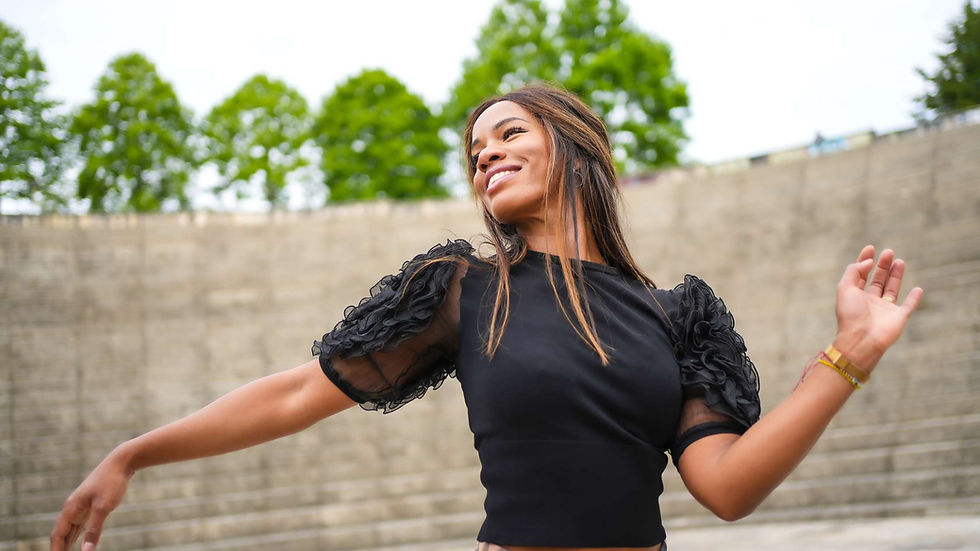How to Spot Red Flags When Choosing Salsa or Bachata Dance Classes
- Gee
- Aug 5
- 3 min read
Updated: 2 days ago
Learning salsa or bachata can be one of the most exciting and rewarding hobbies you’ll ever take up. The music, the movement, the social connection, it’s intoxicating. But in a city like Los Angeles, where the dance scene is massive and varied, not every class will help you grow.

Choosing the wrong studio can slow your progress, lead to frustration, or even create unsafe situations. Spotting potential red flags early ensures your experience stays fun, educational, and confidence-building.
1. Lack of a Structured Curriculum
A quality dance program builds step-by-step, ensuring each class logically builds on the last. Without a clear progression from basic steps to more complex patterns, you risk feeling lost and plateauing quickly.
Red flag: The instructor jumps from one move to another without a clear path or explanation of how each step fits into your growth.
💡 Pro tip: Ask if they have defined beginner, intermediate, and advanced levels, and whether you can observe or try a class to see the flow.
2. Overcrowded Classes
Too many students mean less individual attention, more waiting around, and less correction of bad habits. In salsa and bachata, precision in timing, posture, and connection is essential. If mistakes aren’t caught early, they can stick.
Red flag: You leave class unsure if you’re doing moves correctly because the instructor never checked your form.
💡 Pro tip: Look for studios that cap class sizes or offer small-group lessons.
3. Skipping Connection and Technique
Salsa and bachata are social dances, not just sequences of steps. Without learning proper leading, following, and musicality, you’ll struggle to connect with different partners on the dance floor.
Red flag: Classes that focus only on flashy moves and tricks, with little to no discussion of rhythm, partner cues, or comfort.
4. Weak Communication and Feedback from Teachers
A great instructor can explain the same move three different ways until it “clicks” for you. They’re patient, approachable, and observant.
Red flag: Instructors who are impatient, vague, or dismissive when students ask questions.
💡 Pro tip: Attend a trial class and observe how the teacher interacts—are they checking students’ technique, or just demonstrating and moving on?
5. Heavy Emphasis on Performance Over Social Dancing
Performance training can be fun and flashy, but it’s not the same as learning to dance socially. Social dancing demands adaptability, improvisation, and real-time connection.
Red flag: Most of the class time is spent memorizing routines instead of building practical dance skills.
6. Hidden or Excessive Fees
Workshops, partner rotations, and special events can add up. The best studios are transparent about pricing from the start and don’t push unnecessary add-ons.
Red flag: Costs are only revealed after you’ve committed or you feel pressured to sign up for extras.
7. Disregard for Safety and Respect
Partner dances require physical contact, so boundaries matter. The environment should feel professional, respectful, and safe for all genders and experience levels.
Red flag: Instructors or students dismiss discomfort, force moves, or ignore consent.
8. Poor Reputation or Low Community Presence
Reputation says a lot. In a connected dance community like LA, word travels fast about which studios genuinely invest in their students.
Red flag: Consistently poor reviews, inactive social media, or no presence at local dance socials.
💡 Pro tip: Ask fellow dancers for recommendations, check online reviews, and attend local socials to see who’s respected in the scene.
Final Thoughts
The right salsa or bachata class can completely change your dance journey. Look for structured, progressive teaching, a focus on connection and technique, a safe and respectful environment, and teachers who communicate clearly. When you choose wisely, your skills and your enjoyment will grow naturally.
At LA Salsa & Bachata Dance Academy, we pride ourselves on:
Structured, progressive learning that builds real skill.
Partner connection and musicality as core elements.
Safe, inclusive environments where every dancer feels welcome.
Personalized attention through small group sizes.
Here, you won’t just learn steps; you’ll become confident, social, and capable on any dance floor.



